Handling fall clean up chores and preparing for one last garden crop makes autumn a busy time of year. Are these chores on your to do list?
Originally contributed by Connie Meyer in 2017; this post has been updated.
Chores to Tackle Before Winter Sets In
Whether you call yourself a gardener, farmer, rancher, or homesteader, fall is a busy time of year.
Tackling general yard clean up before winter sets in, turning the compost one last time, and making sure that the chicken coop and beehives are ready for cold weather, and winterizing the garden are all important steps.
Related: Attract Bees and Other Pollinators with these Perennials
Grow Some Greens!
Ready to grow fresh greens, no matter WHERE you live? Sign up for my
FREE quick-start guide and start growing some of your own food!
1. In the Autumn Vegetable Garden
Fall cleanup and other garden chores keep gardeners busy. The determined gardener is busy sowing a final round of cool season crops such as spinach, radish, kale, kohlrabi, assorted greens, and peas.
Besides planting, there is the task of harvesting the end of the summer crops. Crops such as tomatoes, peppers, eggplants, cucumbers, squash, and melons should be abundant. Daily harvests help ensure that the gardener, rather than animals such as squirrels, raccoons, or birds enjoy the bounty.
Once the garden plants are spent, it’s time to remove the old plants. Instead of pulling the plants, consider cutting them off at the base to allow the roots to break down over the winter months. This prevents disturbing the soil and adds nutrients.
Do be sure to remove and trash any diseased foliage. Some pathogens can survive winter and you don’t want to start next spring with a flop.
Related: 5 Ways to Put Your Backyard Hens to Work For You
2. Composting and Yard Clean Up
Regular turning of the compost helps with the break-down of material into the final product… brown, earthy, organic material. Turning also allows the gardener to inspect the compost. A
re there still large pieces of material that are easily identifiable, such as carrot tops? A wedge of old lettuce? Or perhaps half an eggshell? If the answer is no and the compost looks like soil, it is ready to use.
Use finished compost as a top-dressing on fall garden beds or dig it into the top six inches of soil. If you’re doing some yard clean up and trimming plants back, toss the green waste into the compost pile. It will decompose over the winter and be ready for your springtime garden.
3. Mulch
If you have a lawn that must be raked, don’t send the leaves to the landfill! Instead, use them to mulch around the base of trees and berry bushes. As the leaves break down over the course of the winter, they’ll add nutrients to the soil.
Leaves in other areas of the yard can be left where they fall, as they can be home to numerous insects who use them to overwinter. Embracing a yard that’s a little bit messier saves you time and leaves critical habitat in place.
If you’re concerned about having those insects nearby, consider moving the leaves to a far corner of the yard where they can host overwintering creatures and slowly break down.
4. Gather and Store Tools
Track down your hand tools, shovels, and the wheelbarrow and put them away in a dry spot. Leaving them out in the weather will allow rust to take hold and shorten their lifespan.
Related: Chicken Supplies I Always Keep in the Coop
5. Backyard Chickens
Fall is generally the time of year when chickens enter their molt (losing feathers).
While regular coop cleaning, watering, and feeding is not new to the fall schedule, supplying extra protein to chickens is. This extra protein helps chickens regrow their feathers — which are primarily protein. Chicken friendly protein sources include items such as sunflower seeds, meal worms, and even meat scraps.
Fall is also a good time to check the coop for fitness. Is the roof in good shape? Will the structure provide enough dry space for rainy weather? If you live in a really cold region, will the birds be warm enough?
 6. Fall Hive Inspection
6. Fall Hive Inspection
If you keep bees, be sure to do a fall hive inspection. This is typically the last time the hives are opened until the following spring.
This involves pulling out frames from the supers (upper shallow boxes) and checking them individually for capped honey. If the supers contain capped honey, the beekeeper removes supers so honey can be harvested.
Frames from the deeps are removed one by one, checking for the presence of the queen. We also look for signs of pest infestation, disease, and check for brood as well as honey. This honey in the deeps is stored for the colony to sustain them through the late fall and winter months.
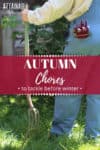
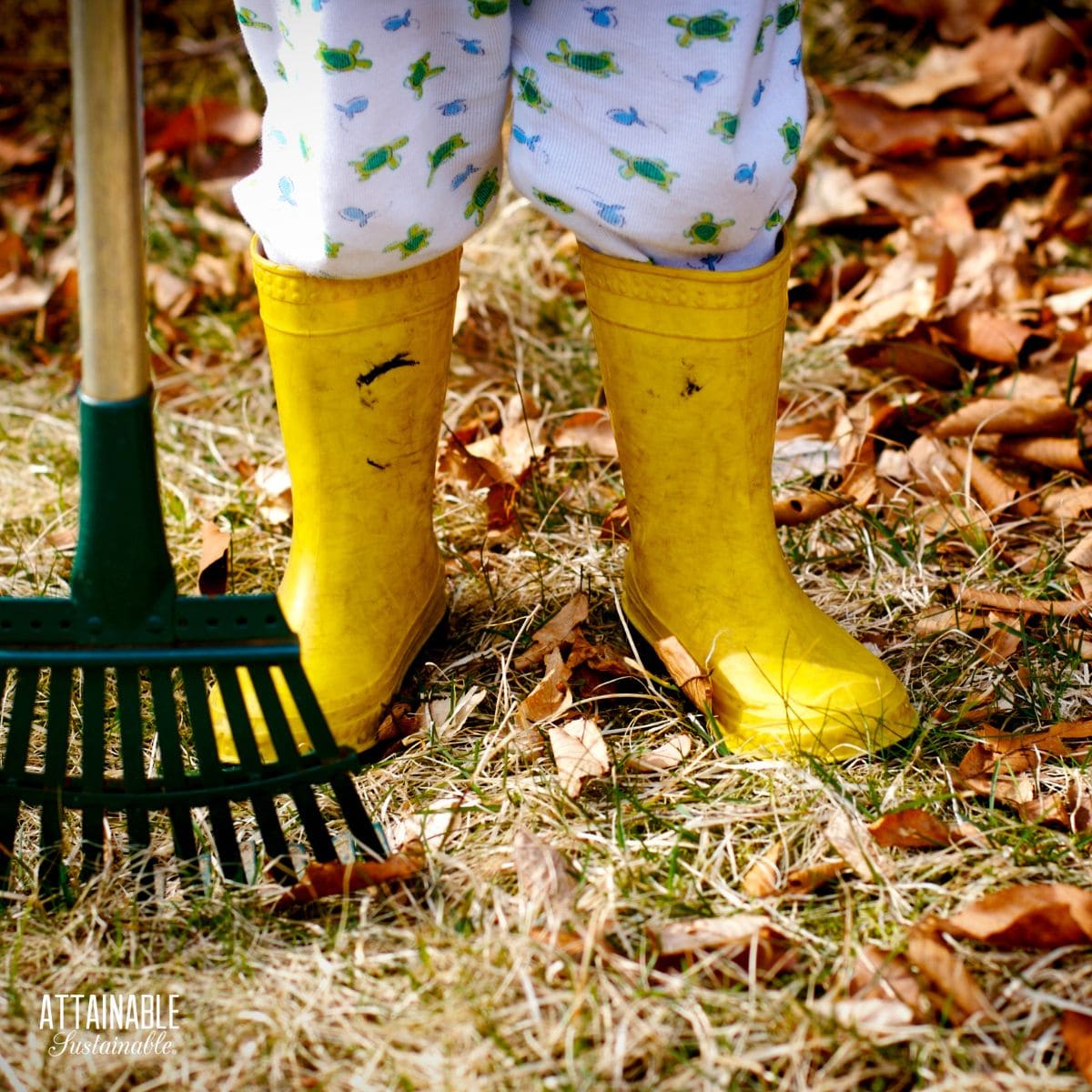
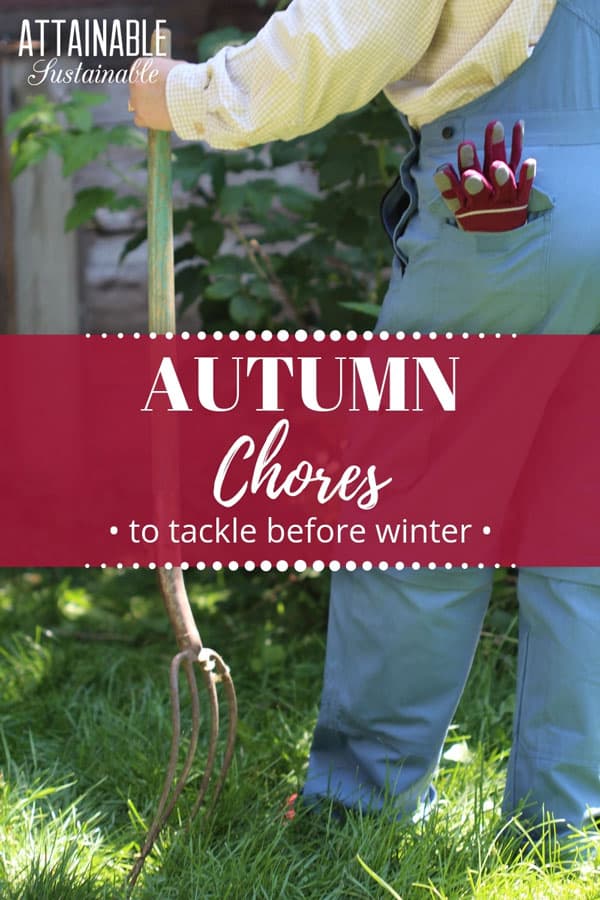
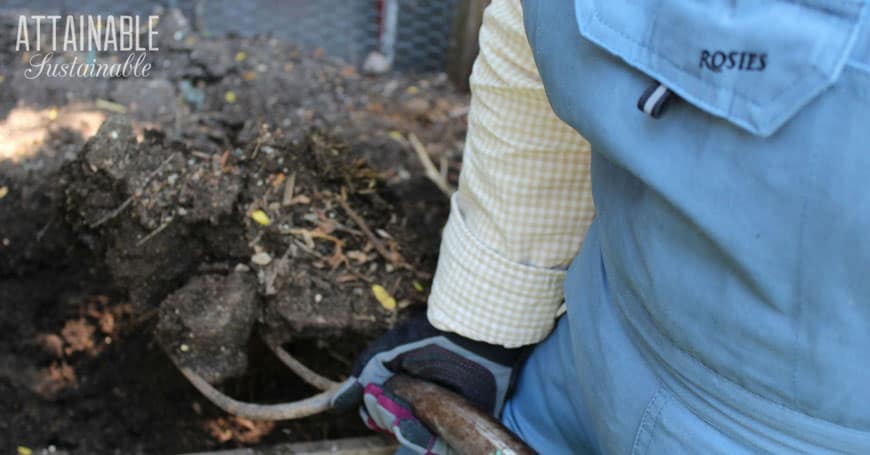
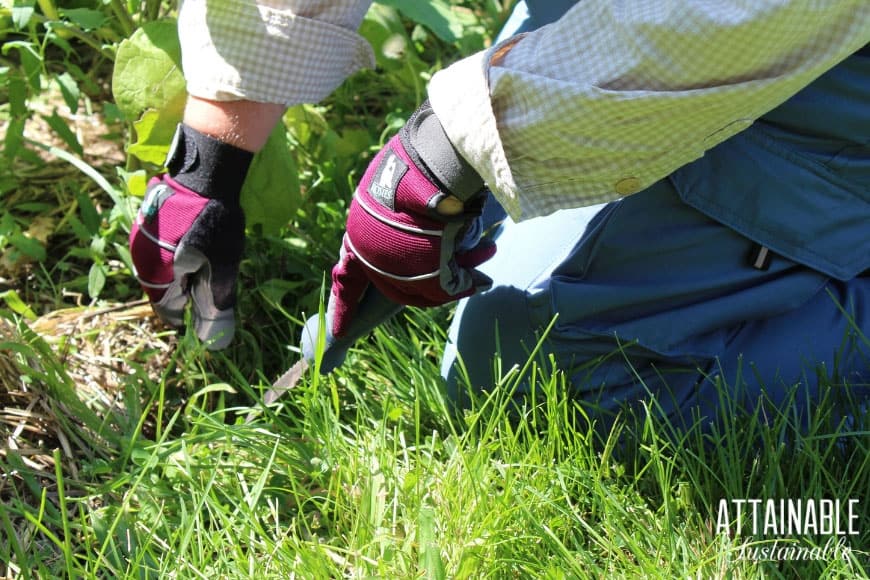
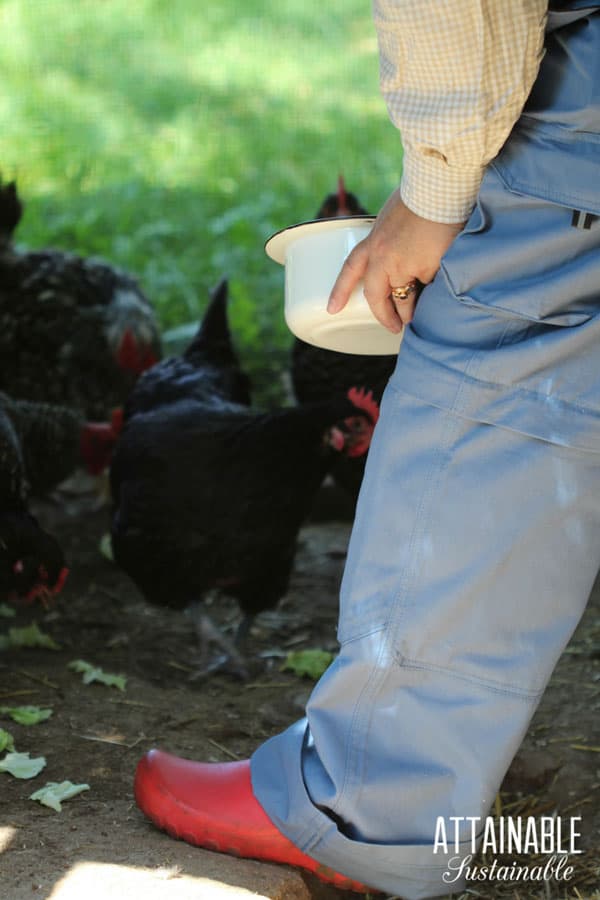
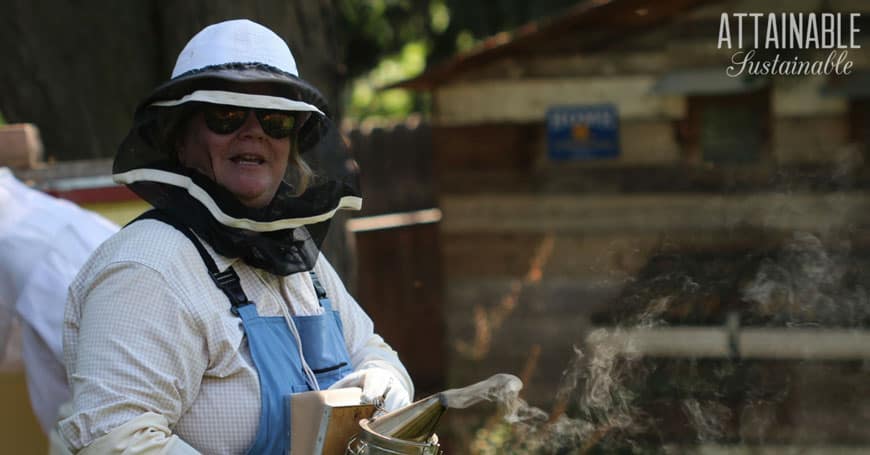 6. Fall Hive Inspection
6. Fall Hive Inspection




Be careful about mulching around the base of trees: some will die if you do, as they can’t “breathe”. If you still want to, make sure to leave a bit of area around it, then mulch about a foot away from the trunk.
Know this from experience.
We want to take down a barbed wire fence along one edge of our property. And we want to cut down some small, dead trees that were growing up thru the fence at different points, and tackle the vines that are growing up into some of the other trees, to try to salvage them. But the weather here in NE TN is SO unpredictable. It’s supposed to be back up in the 80s by the end of this week. Neither of us can stand the heat.